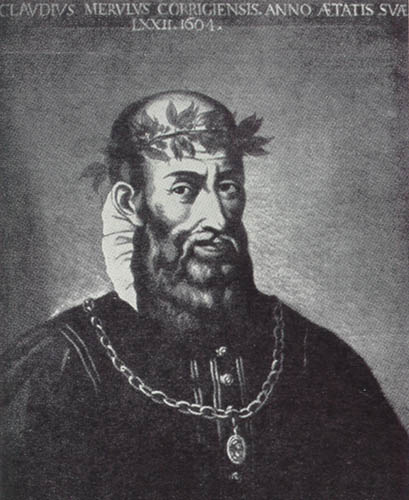

Italian composer organist, and music
publisher. Student of Tuttovale Menon and Girolamo Donato.
Organist at Brescia (1556-57); in 1557 became second organist
at St Mark's, Venice, and in 1564 succeeded
Annibale Padovano
as first organist. Later in Parma (from 1586, first at the
ducal court, then also at the cathedral; from 1591 for the
ducal church La Steccata). His contemporaries considered him
the finest organist of his time; he was an organ builder as
well as player, and during his time in Venice was active as a
music publisher. Didactic treatises by his students, notably
Il transilvano
by Girolamo Diruta, transmit his contributions to organ
technique. His activity as a publisher, though brief (1566-70),
encompassed the production of numerous volumes---reprints and
new books, collections of his own works and of works by other
Italian composers. Volumes edited by him appear up until 1575
and include pieces by composers as
Verdelot
,
Arcadelt
,
Rore
, and
Lassus
, often substantially changed in underlay, accidentals, and
even the musical fabric itself Other works include sacred and
secular vocal music (chiefly Masses, motets, and madrigals);
intermedi for two dramas.

Merulo's own output consists of four volumes of madrigals, two of Masses, six of motets, six of organ music and one of instrumental ricercars; some of these were issued posthumously by his nephew, who succeeded him at Parma. His madrigals were craftsmanlike rather than profound or experimental. It is in keyboard music that Merulo excels. He developed the ricercar and canzona forms, but made his most significant contribution to the toccata, imparting to it an impressive formal balance between brilliant, improvisatory writing and sterner contrapuntal passages whose ideas might be cleverly reworked as the piece proceeded. His most distinguished works are for organ (especially toccatas, ricercars, organ Masses, and organ canzonas). Most are in some degree based on vocal models, although only a few are simply transcriptions; many more incorporate highly idiomatic ornamentation and figuration and a free treatment of dissonance unusual for the time.Of all the Italian organ composers, Merulo perhaps did most to further a self-sufficient keyboard idiom.